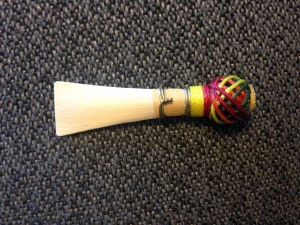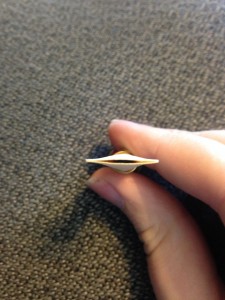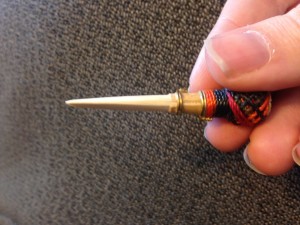Have you ever heard of Andreas Eastman bassoon reeds? I hadn’t until about a year ago when a student of mine showed up with three of them. She told me she had purchased them on Amazon. I did a little research on these Eastman reeds. They are not made by a person named Andreas Eastman. They are made in China. In a factory. And they are cheap: $10.49 (as of March 2016).

Those first three Eastman reeds were terrible. We spent the better part of three lessons getting them to function properly. When my student told me she was going to order three more, I tried to get her to order from Tom Hardy instead. But she was in a desperate reed situation and needed the speed and convenience that Amazon provides. So she ordered three more medium strength reeds and I took the opportunity to test them.

Results
Bocal fit was not great for any of the reeds. All of them leaked, some worse than others. Also, the reeds all have very thick wire.
Response was varied. The low notes were resistant, and the reeds varied in their overall feel. All were playable (initially).
Reed #1 – “Forest Fire”
Sound: The amount of leaking air made it difficult to hear.
- D in the staff: 20 cents sharp
- A at the top of the staff: 10 cents sharp
- Low F: 10 cents sharp
Reed #2 – “Pumpkin Patch”
Sound: “A little rough, but I like it!” – my student Emily
- D in the staff: Perfectly in tune
- A at the top of the staff: 2 cents flat
- Low F: Perfectly in tune
Reed #3 – “Halloween”
Sound: Decent. Not dark, but good.
- D in the staff: 10 cents sharp
- A at the top of the staff: 25 cents sharp
- Low F: 10 cents sharp
Conclusions: These reeds are not consistent. They were initially sharp (although I do need to note here that my student is notorious for playing sharp—we’re working on an embouchure overhaul). But, other than thinning the tip, adjusting the wires, and adding some wax to the back of the reeds to keep them from leaking, I didn’t have to adjust these reeds.
*UPDATE*
My student played on these reeds for a few days before they seized up. They almost stopped vibrating entirely. I measured them on my dial indicator and their measurements were all over the map. The backs of the reed ranged from too thin to just right, while the front half of the reeds were various degrees of THICK. I had to take off a lot of cane and swap out the weird thick wire. The reeds were also flat instead of 20 cents sharp like they had been a week before. After 40 minutes of work, I was able to get them to sound decent. If you decide to buy these reeds, think of them more as reed blanks than as reeds because a lot of work is required to get them working properly.
